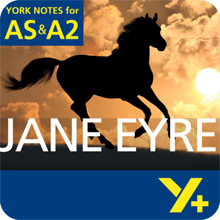Examiner's Notes
You assessed this answer as a B grade.
Hover over the highlighted text to read the examiner’s comments. These are linked to the Assessment Objectives, which are listed in the side panel.
The first time Jane meets Rochester is very different from the first time she meets St John. Jane already has her position at Thornfield Hall and Rochester plays a trick on her by pretending not to be the master of Thornfield. He is quite rude to her. St John, however, is kind and gentle and takes Jane into his house when she is ill and destitute. Country vicars are quite common in Victorian novels, such as those by Jane Austen, but are usually humorous characters, which is very different from St John.
Rochester is a high-class landowner whereas St John is a vicar. Vicars in Victorian days were often poor and isolated, like Brontë’s father. Rochester and St John both live in the countryside but they have very different social lives. St John likes to visit people in his parish, but Rochester seems to keep himself to himself, except for the parties that he has so that he can meet a future wife. St John Rivers and Edward Rochester are opposites. Rochester is described as having a strong physical presence – Brontë says he has ‘broad and jetty eyebrows, deep eyes, strong features, firm, grim mouth’. St John, in contrast, has ‘large and blue’ eyes, a simile to describe his forehead ‘colourless as ivory’ and ‘locks of fair hair’. But St John is often described as being cold and Brontë uses the metaphor of using his eyes as ‘instruments to search other people’s thoughts’, which is quite a cold idea. St John is not a very sympathetic character, but sometimes Rochester can be unsympathetic too.
It could be said that Rochester and St John are different sides to Jane. One side of Jane is passionate and hates being told what to do – for example, at Gateshead she is often punished for speaking up for herself and Mrs Reed ironically says ‘Did ever anybody see such a picture of passion!’ This description is surprisingly like Rochester. Rochester is a Byronic character that means he is angry and passionate. St John is the calm side of Jane, who likes to study and dedicate themselves to work, although even Jane says that St John goes too far in this, ‘he tasks himself too far’. This reflects different Victorian attitudes to life – many people lived by very strict religious ideas, but many people (like Rochester) had different ideas.
Jane wants to help St John and Rochester and they both look to her to complete their lives, but in different ways. Jane tries to help St John express his love for Rosamond, saying she wants to ‘burst’ into the ‘silent sea’ of his emotions, which is a quote from Coleridge. Jane helps Rochester to overcome his self-hatred at the end of the novel. He even believes that her soul ‘wandered from its cell to comfort mine’.
